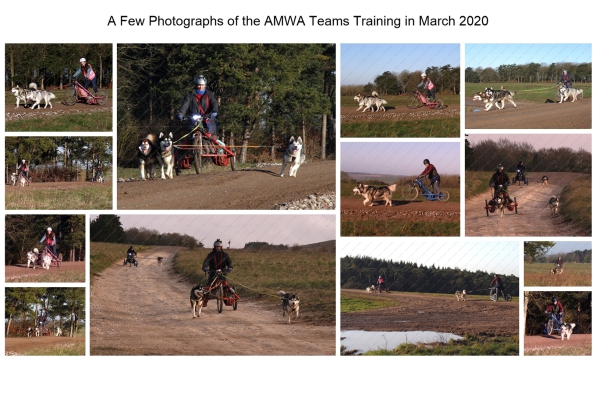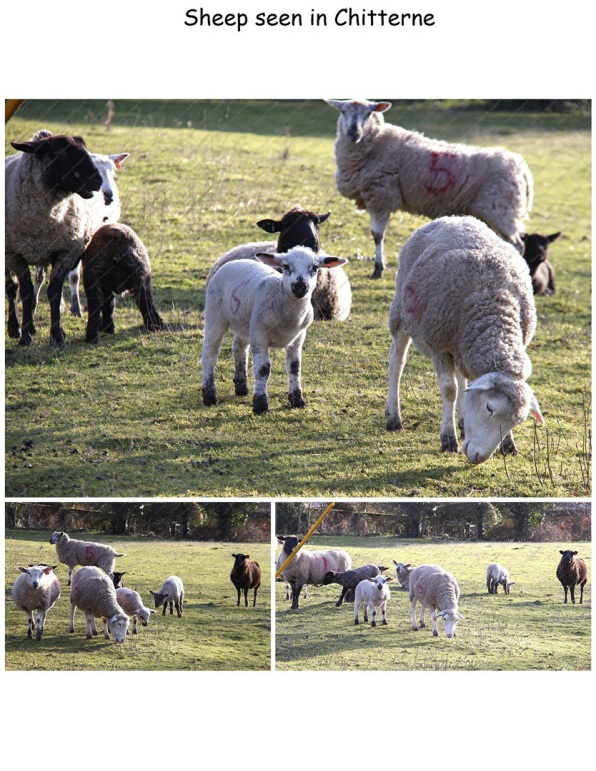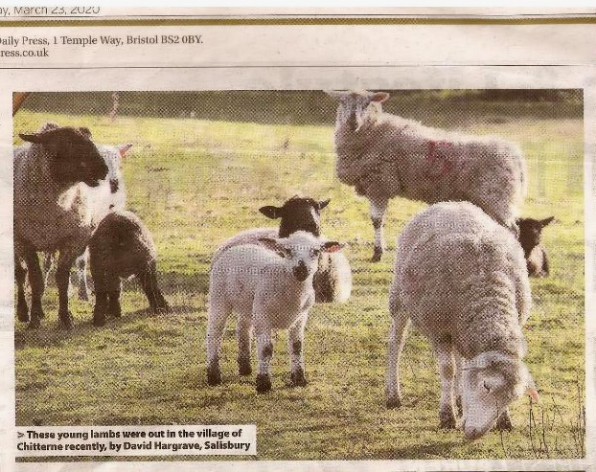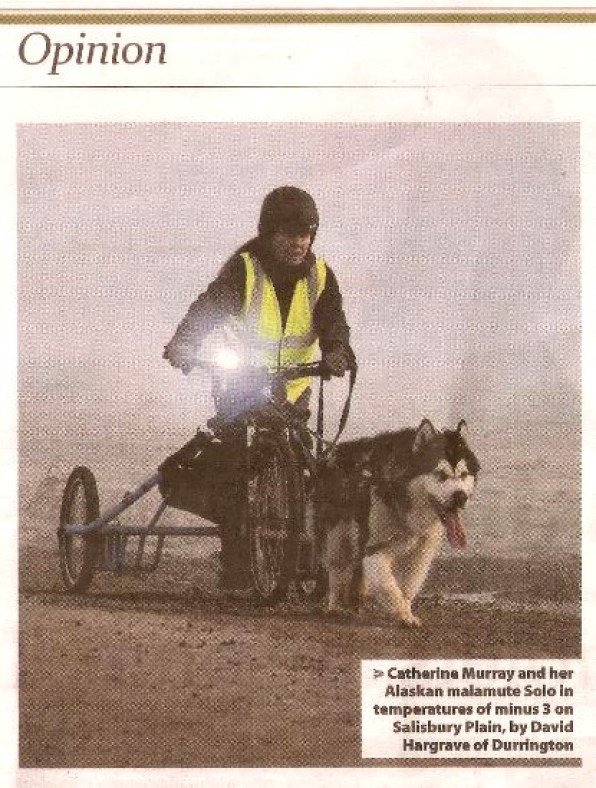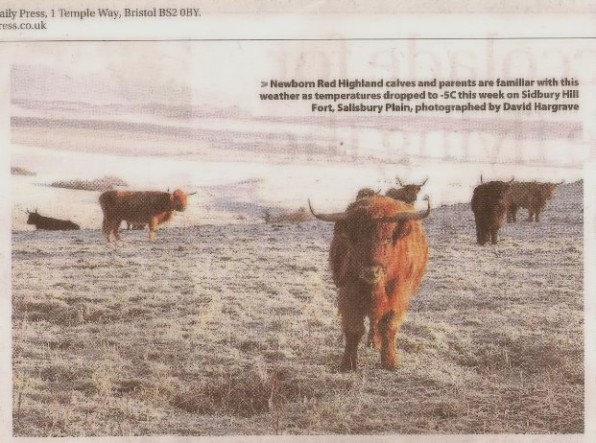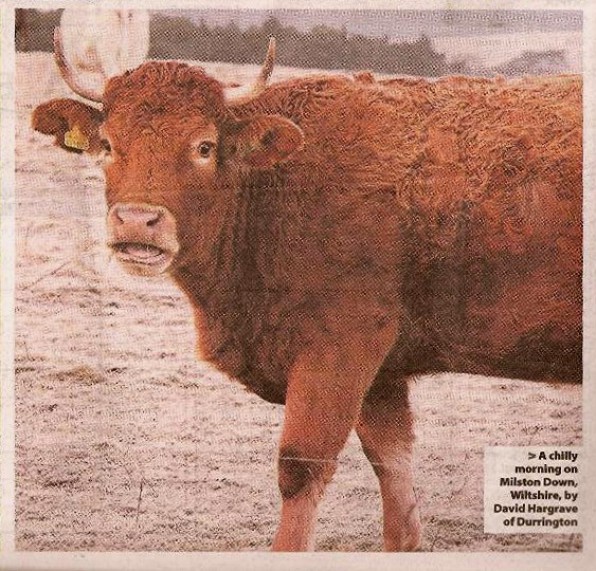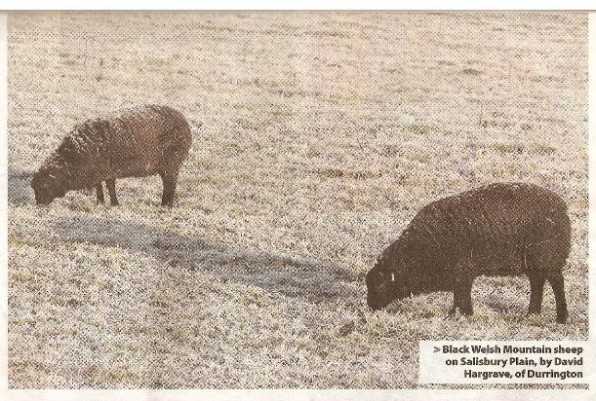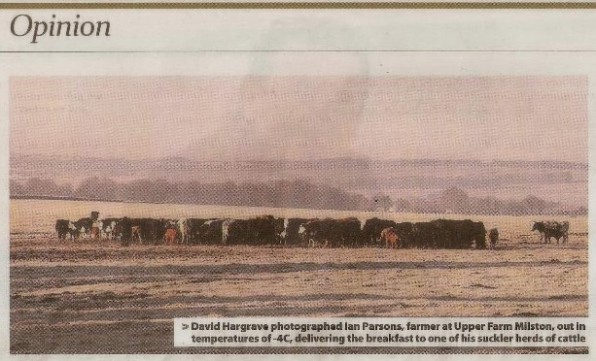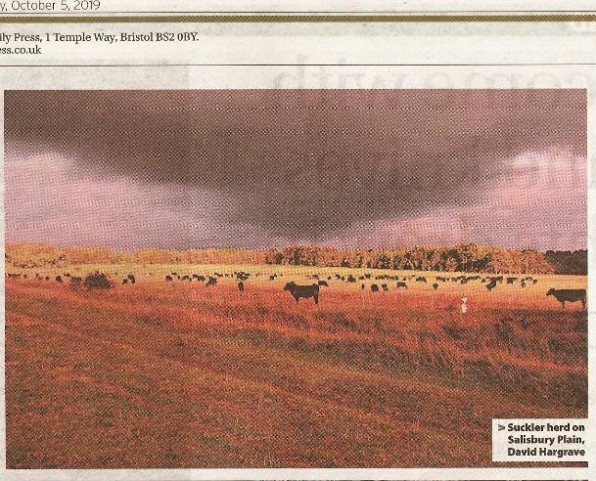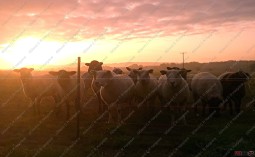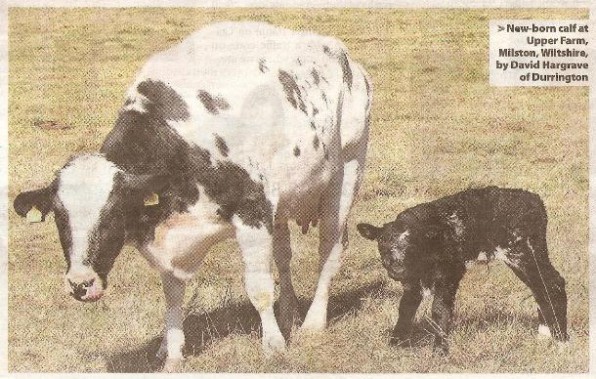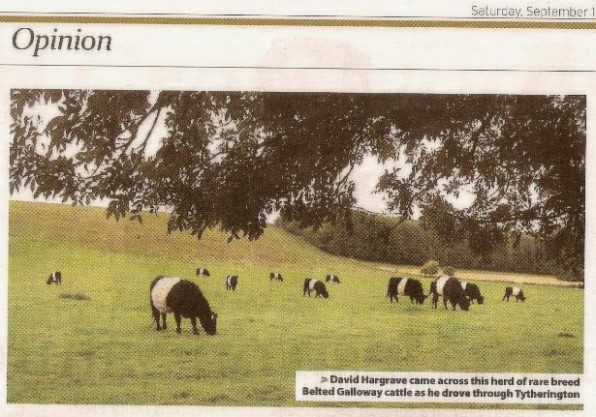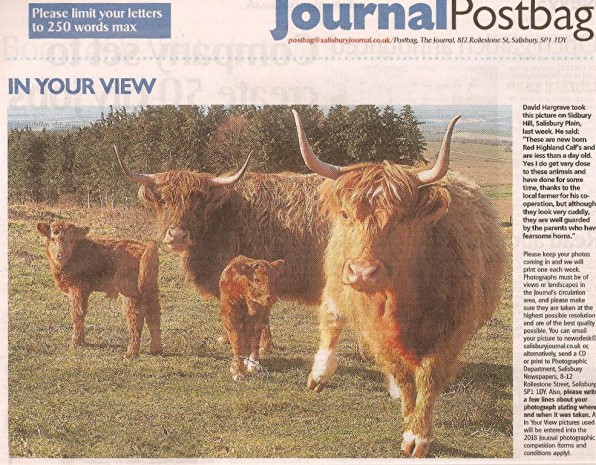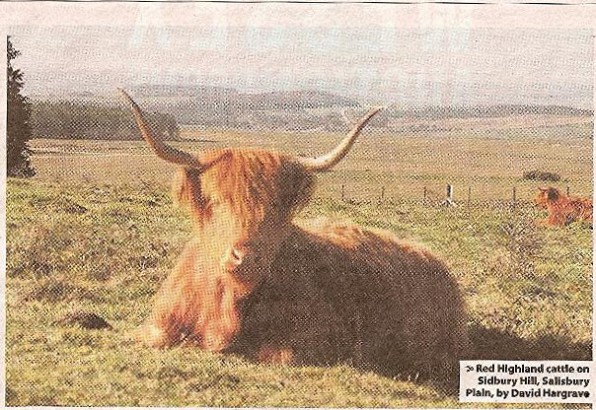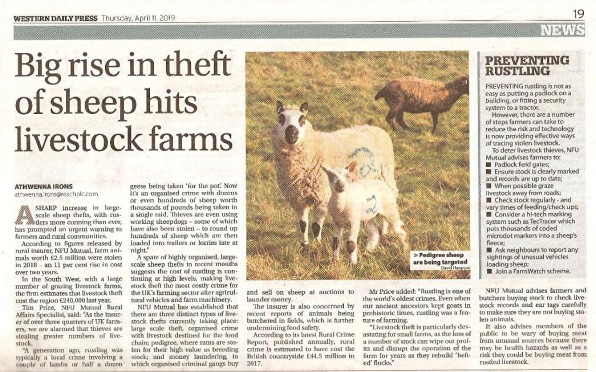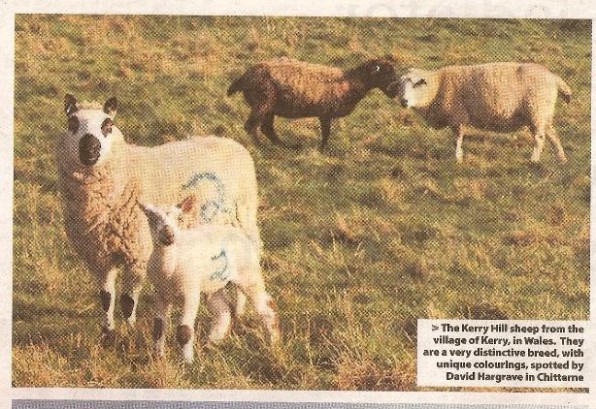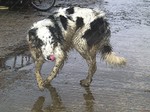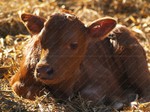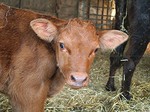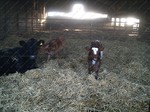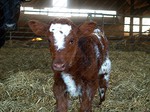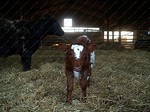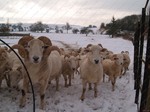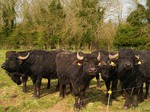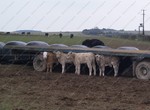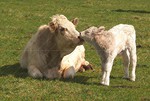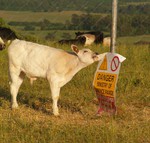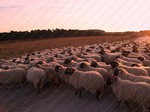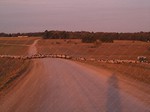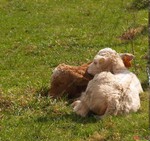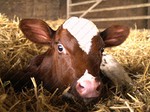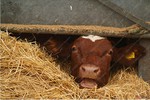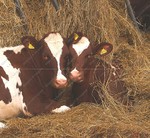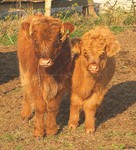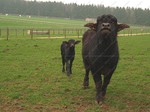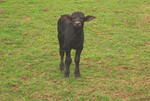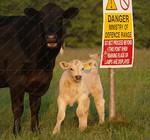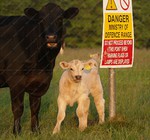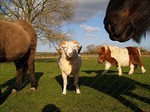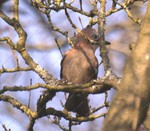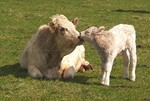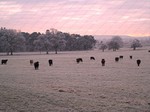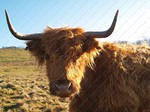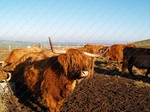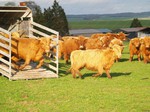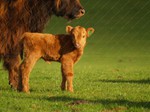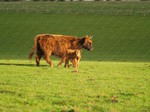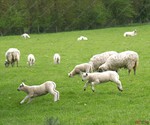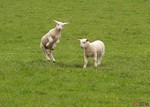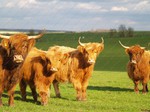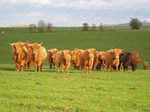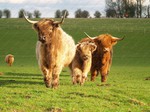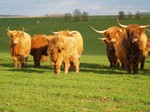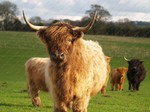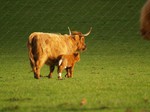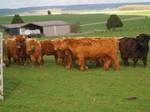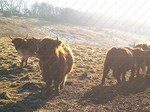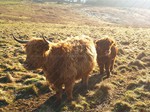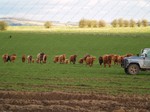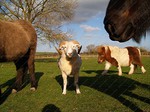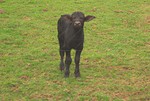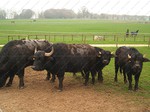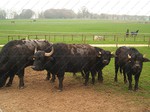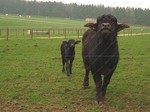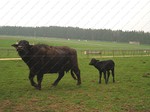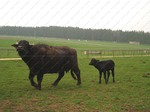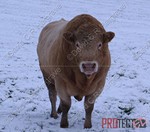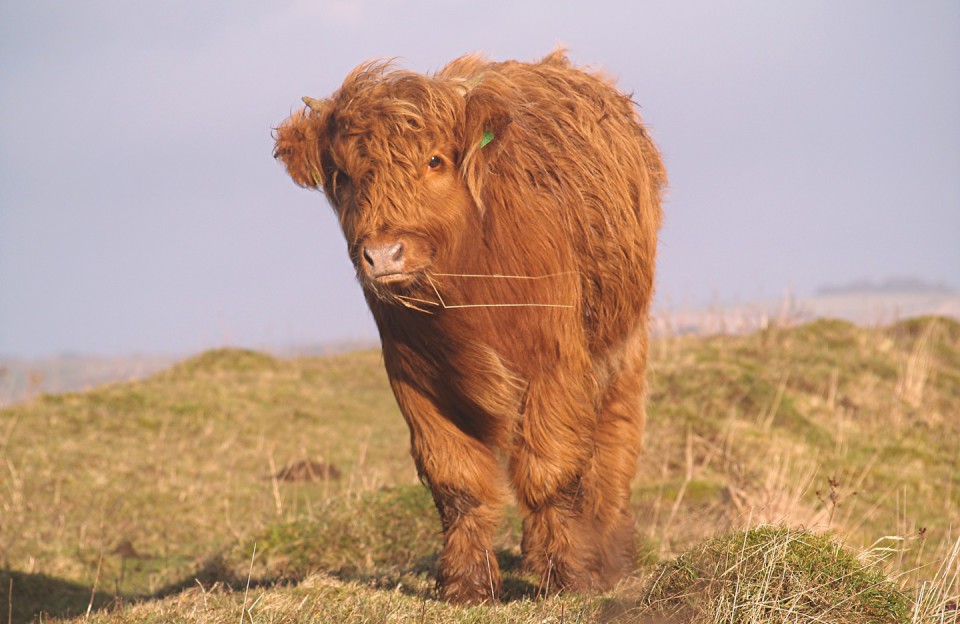
Animal Photographic Gallery
This will just be a gallery of photographs that I have been lucky enough to capture in and around Salisbury Plain and on my journeys further afield.
I plan to update it periodically with new photographs. They do say 'never work with animals or children'!
Update on Cattle Grazing Unfenced Wearing GPS Collars - 31st March 2022
I have been watching with interest this new method of control, of animal grazing on the downland.
The herd are now producing youngsters, this mother has given birth a few minutes ago and already she is encouraging it to become mobile.
I was on site this morning and met James Waight who was checking on the youngsters and he very kindly explained more about how the system is working and how pleased he is
with the venture.
Cattle Graze Unfenced Wearing GPS Collars - 15th & 21thMarch 2022
Extract from Farmers Weekly
An organic ranch-style farming system is allowing a Wiltshire business to run 490 cows with just two labour units and create a rare and highly valued habitat in the
process.
The Waight family farm arable and beef on a Ministry of Defence tenancy at Compton Farm, Enford, on the chalkland of the Salisbury Plain.
By working closely with the MoD and ecologists at Natural England, the crossbred herd grazes sensitive grassland, 70% of which is classed as a site of special scientific
interest (SSSI).
Environmental grazing
The system requires hardy, maternal cows to calve unassisted and thrive outside all year across more than 3,200ha of unfenced extensive heathland, stocking at one cow to
6.5ha.
“Cattle are so important to this environment,” explains Bruce Waight, who farms with wife Lucy and sons James and Henry.
“They open the ground up treading seeds in each year. Without cattle, bushes and bigger plants dominate and shade out the rare flowers.”
The business pays a rent to the MoD as Agricultural Holdings Act tenants, with land quality and rent varying hugely.
The Waites receive subsidy and stewardship payments directly.
With no fencing out on the Plain, the breeding herd spends much of its time behind electric fencing, grazing land that has never seen fertiliser, herbicide or a
plough.
Cattle are moved around the Plain to suit the management of the flowers and ground-nesting birds, with Natural England advising on how to prevent over-and
under-grazing.
The Waight family are now also using the Collar system to control the grazing of the Downland. This will eventually save on erecting and moving electric
fencing on mobile penning areas.
It will also save the problems experienced by cattle traversing the electric fencing, roaming after wildlife or Military activities breaching the fencing during the hours
of darkness.
Highland Cattle - 18.03.22
These photographs were taken on Salisbury Plain showing new born Highland Cattle calves, most just two days old and some are even younger.
Highland Cattle is a Scottish breed of rustic cattle. It originated in the Scottish Highlands and the Outer Hebrides islands of Scotland and has long horns and a long
shaggy coat. It is a hardy breed, able to withstand the intemperate conditions in the region.
Wiltshire Horn Sheep - 22.03.20
The Wiltshire Horn sheep is the original no-shearing sheep: the traditional choice for the 21st century. It has the strengths of a native lowland breed, combined
with low maintenance and low input costs, and has the ability to meet the most stringent requirements of the modern sheep industry, in both the commercial and smallholding sectors.
The current growth in popularity of the breed is primarily due to it’s ability to shed it’s fleece. The Wiltshire Horn has a short fleece that naturally sheds in the
spring leaving a short hair coat. The fleece will then grow again in the autumn to offer protection during the winter months. In an industry where wool production has become uneconomic the advantages
of self shedding sheep are clear to see. The labour costs associated with wool are drastically reduced with no need to gather sheep for shearing, dagging or dipping.
As well as gaining popularity for their easycare characteristics, the large framed ewes are good, milky mothers and are equally suited to indoor and outdoor lambing
systems. Both purebred and crossbred lambs have remarkable vitality at birth and will finish off grass growing to heavy weights without putting on excess fat. This ability of the Wiltshire Horn
ewe to produce crossbred butchers lambs is now becoming appreciated more generally across the industry, even leading to showing successes at primestock events.
It is of course a very old native breed and up until the end of the eighteenth century was the predominant breed to be found on the Wiltshire Downs. At that time the
sheep were able to roam freely, doing well on the poor terrain which offered little shade or protection. It is this background that has given the breed it’s hardiness and resilience.
The breed was saved from extinction by a small group of enthusiastic breeders who formed the Wiltshire Horn Sheep Society in 1923. The breed prospered until the
early 60’s when trade declined due to the soaring value of pelts of the other main breeds. In the 1970’s the breed came under the protection of the RBST because numbers were so low.
In recent years the number of registered sheep has significantly increased and so the breed has developed into the large commercial flock it is today. During the last
twenty years the breed has progressively moved forward as sheep quality has improved and flock masters have appreciated the self shedding benefits which are increasingly important to those wishing to
develop low maintenance, and low input sheep systems. Stock have been exported to Australia, New Zealand, South America, West Indies, and there is a growing flock throughout Europe.
Alpacas - Figheldean - 29.01.20
Driving along the main road I saw this beautiful pair who were only to pleased to pose!
The alpaca (Vicugna pacos) is a species of South American camelid descended from the vicuña. It is similar to, and often confused with, the llama. However, alpacas are
often noticeably smaller than llamas. The two animals are closely related and can successfully cross-breed. Alpacas and llamas are related to the guanaco. There are two breeds of alpaca: the Suri
alpaca and the Huacaya alpaca.
Alpaca fiber is used for making knitted and woven items, similar to sheep's wool. These items include blankets, sweaters, hats, gloves, scarves, a wide variety of
textiles and ponchos in South America, and sweaters, socks, coats and bedding in other parts of the world. The fiber comes in more than 52 natural colors as classified in Peru, 12 as classified in
Australia, and 16 as classified in the United States.
Alpacas communicate through body language. The most common is spitting when they are in distress, fearful, or mean to show dominance. Male alpacas are more
aggressive than females, and tend to establish dominance of their herd group. In some cases, alpha males will immobilize the head and neck of a weaker or challenging male in order to show their
strength and dominance.
Red Highland Calves with Parents - 21.01.20
These photographs were taken today at 08:00 on Sidbury Hill Fort, Salisbury Plain with temperatures this morning of -5. These are new born Red Highland Calves and
Parents and are used to this cold weather.
I do get very close to these animals and have done for sometime, thanks to the local Farmer for his co operation, but although they look very cuddly, they are well
guarded by their parents who have fearsome horns.
They are in a fenced SSSI and a delicate area. Dog walkers etc are asked to remember, that bylaws do apply and animals should be given a wide birth while they have
their young with them.
Larkhill Down - Minus 4 - 20.01.20
I was on Larkhill Down at 07:45 this morning at -4 just before sunrise. This little calf was pleased to see me.
As you can see I was in the field with him, this is not advisable. I see these animals regularly and they do get used to me talking and being with them, but you
cannot trust them.
All animals are very protective and unpredictable, as you will see, the mother and father are both watching me.
The other animals are on the move having been supplied breakfast.
Belted Galloway Cattle - 11.09.19
I took a diversion off the A36 today, due to its closure and as I drove through Tytherington, I came across this herd of Belted Galloway cattle. They
were once considered to be a 'rare' breed but luckily their numbers have risen enough to drop this title.
The Belted Galloway is a traditional Scottish breed of beef cattle. It derives from the Galloway cattle of the Galloway region of south-western Scotland and was
established as a separate breed in 1921. It is adapted to living on the poor upland pastures and windswept moorlands of the region.
The Belted Galloway is thought to have developed the belt from crossing with the Lakenvelder in the seventeenth century. The Belted Galloways were originally part
of the main Galloway herd book but a separate Belted Galloway Society was formed in 1921.
A stocky breed with a thick, shaggy coat and face giving the Belted Galloway a “teddy bear” appearance. The breed is medium sized. Cows weigh around 550kg and bulls
850kg. The coat colour is usually black with some dun and some red animals. The famous belt is white in colour and runs over the middle of the animal.
Extremely hardy and adaptable to a wide range of habitats and environmental conditions, the Belted Galloway has proven value for both conservation and commercial
use.
A gentle, placid nature and attractive appearance makes the Belted Galloway a very useful animal for grazing sites with public access.
Many hill farmers keep herds of Belted Galloways because their distinctive markings makes them easier to spot on the hill. On Dartmoor, there are stories that some
farmers switched to Belted Galloways as their white stripe makes them more visible to motorists at night.
Belties have a double coat. This means that as well as the longer outer hairs, they have a soft ‘mossy’ undercoat. This helps them to keep warm and dry. It means
that Belties don’t have to grow a thick layer of fat under their skin to keep warm, which makes the beef much better.
Highland Cattle - 26.03.19
I found these highland cattle on Sidbury Hill, Salisbury Plain.
The calves are less than a day old. They can be already seen running around, altough a little wobbly but very inquisitive.
Yes I do get very close to these animals and have done for sometime, thanks to the local farmer, for his co operation, but although they look very cuddly, they are well
guarded by the parents who have fearsome horns.
The cattle are in a fenced SSSI area. Dog walkers etc are asked to remember, that bylaws do apply and animals should be given a wide birth while they have their
young with them.
Sheep and Lambs in Chitterne - 02.03.19
I took these photographs of ewes with their lambs in Chitterne. Among all of them was a very
distinctive ewe with her lamb, which I have since found out is a Kerry Hill ewe. She is the one with black eyes and knees!!
The Kerry Hill hail from the village of Kerry, in Wales. They are a very distinctive breed, with unique colourings. They have a white face, with black markings around
their mouths, eyes and ears! The breed is a completely polled breed, while they have white wool. Their legs are also white, with black markings.
They are a sturdy breed, medium sized, with ewes weighing up to 65kgs and rams slightly heavier. The average fleece of this breed weighs, 2.75kgs. They have a
brilliant lambing percentage, sometimes up to 175%. Lambs have an excellent growth rate, due to the high quality of the ewe's milk.
Lambs can reach up to 16kgs at 12 to 14 weeks old! The Kerry hill sheep are the king of the mountains of Wales and they are beautiful to look at too!
